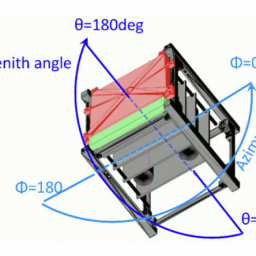GRB-detecting nano-satellites and a small UV space telescope for transient follow-up
Jakub Ripa (Masaryk University, Department of Theoretical Physics and Astrophysics Brno, Czech Republic)
Tuesday 07/11/2023 @ 14:30, Sala Antonio Sollima (IV piano Battiferro)
I will present the results of the GRBAlpha and VZLUSAT-2 nanosatellites, which carryonboard gamma-ray detectors for monitoring transients. GRBAlpha, a 1U CubeSat launched in March 2021 has, so far, detected 70 gamma-ray transients, such as gamma-ray bursts (GRBs), flashes from the soft-gamma repeater SGR 1935+2154, and solar flares. It detected the extraordinarily bright GRB 221009A, which was the most intense GRB ever recorded in the 55-year history of GRB science, and was able to provide an unsaturated measurement of its peak flux. More than two years after the launch, the detector performance is good and the SiPM photon counters' degradation remains acceptable. The same detector system, but double in size, was launched in January 2022 on the VZLUSAT-2 3U CubeSat. So far, it has detected 57 gamma-ray transients, including GRBs, the activity of SGR 1935+2154 and SGR 1806-20, as well as solar flares. CubeSats have detected the exceptional GRB 230307A (2nd brightest, long-duration but with detected kilonovae pointing to a merger scenario). I will also introduce the UV space telescope on a 110 kg SmallSat with a moderately fast repointing capability and a real-time alert communication system that is being developed. The Quick Ultra-VIolet Kilonova surveyor (QUVIK) mission is currently at the end of the B1 phase of a Czech-sponsored study under the auspices of ESA. It shall measure the brightness evolution of kilonovae, resulting from mergers of neutron stars in the UV band, and thus, it shall distinguish between different explosion scenarios. The satellite, carrying a GRB detector with a degree scale localization capability, will also greatly benefit the study of GRBs and their afterglows. The mission has been recently selected to be funded.

